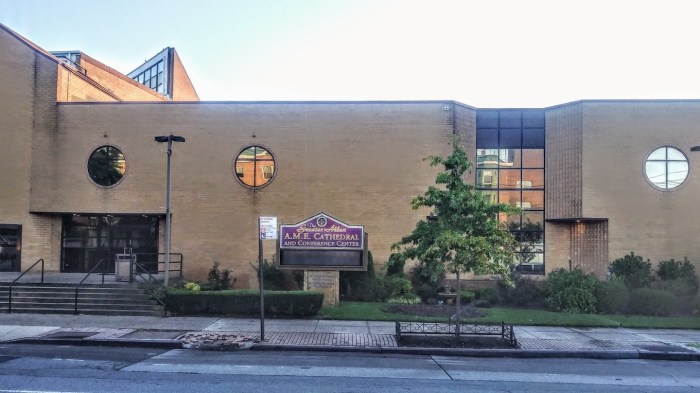
In a city where fine diners pay $100 for a meatball, more than 1 million people still can’t afford to eat three square meals a day.
Those are the sobering findings of Hunger Free America’s new report “The Uneaten Big Apple: Hunger’s High Cost in NYC.”
According to the study, which will be released Tuesday, 12.8 percent of the city’s population suffered from food insecurity from 2015 through 2017. And while that’s a 22 percent decrease from 2012 through 2014, it’s still unacceptable, said Joel Berg, CEO of Hunger Free America.
“Let’s not let mass deprivation be the new normal,” said Berg. “It’s better to be improving than to get worse. But any other developed city would be ashamed to have these numbers.”
Researchers crunched U.S. Census numbers with USDA data to come up with a portrait of hunger and food insecurity in the city, as well as the surrounding metropolitan area. Increases in wages plus low unemployment helped fuel a decrease in the number of people who can’t afford enough food for their households. However, the statistics are still higher than before the recession hit about 10 years ago.
About 1.96 million people in the region — which includes the city and its suburbs as well as New Jersey and Connecticut — struggled with hunger in 2015 through 2017, compared with 2.61 in 2012 through 2014.
From 2005 through 2007, right before the recession hit, that number was 1.56 million.
“This is very serious,” Berg said. “You are talking about parents going without food to feed their children, people rationing food and getting less healthy food.”
Rev. Dr. Anna S. Pearson, executive director of Holy Apostles Soup Kitchen, said there has been no decrease in the number of people they serve through hot meals and bag lunches.
The Chelsea-based church estimates it will have served 260,000 meals by the end of 2018.
“We definitely feel that even if there is one hungry person, there’s too many hungry people,” said Pearson. “There are still a lot of people who are struggling at all levels.”
She said the soup kitchen is planning to create weekend packages for families in December which will include non-perishable items.
“There are fewer services on weekends,” Pearson said. “We are hoping this will help.”
The situation is most dire in the Bronx, where the study showed more than one in four residents experience food insecurity.
Bronx Borough President Ruben Diaz Jr. said cuts to the federal food stamp program, known as the Supplemental Nutrition Assistance Program (SNAP), have led to more hunger.
“This report makes it crystal clear just how many families have been affected by this wrongheaded federal policy,” Diaz said in a statement to amNewYork. “It is impossible to fight food insecurity and hunger with diminishing resources.”
According to the report, the number of children in New York City living with food insecurity showed a smaller decrease of 13 percent.
Berg credited elected officials for expanding free meals in schools, pushing for an increased minimum wage and increasing funding for food pantries.
“The report proves there is a giant need in one of the wealthiest cities in the world for food pantries that rely on donations,” said City Councilman Ben Kallos. “New York City should be doing more to fight hunger to protect our kids and our seniors as they are most vulnerable and more likely to face hunger and food insecurity.”
The key, however, is making New York City more affordable, Berg said.
“The top thing necessary to reduce hunger is to make housing affordable,” he said. “If you are making $24,000 a year and paying $1,500 a month rent, then you have $6,000 for the entire rest of your life: food, transportation, child care and, god forbid, if you wanted to buy clothing for an interview.”
Food pantries are unable to keep pace with the need. According to the report, 34 percent of pantries and kitchens in the city were forced to turn people away, reduce portion sizes or limit their hours this year.
“This is not something you can charity away,” said Berg. “Food drives are sort of the bucket brigades of today. They make us feel good but they don’t solve the problem.”
HUNGER BY THE NUMBERS
- From 2015 to 2017, 12.8% of the city’s population suffered from food insecurity (unable to afford an adequate supply of food)
- The Bronx remains New York City’s hungriest borough with more than one in four (26%) Bronx residents experiencing food insecurity
- In 2018, 34% of pantries and kitchens in New York City were forced to turn people away, reduce their portion size or limit hours of operation due to lack of resources
(Data from Hunger Free America’s report, "The Uneaten Big Apple: Hunger’s High Cost in NYC)


































